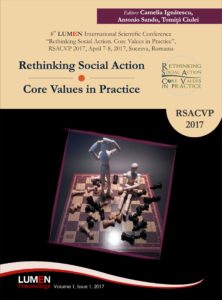Applying the Multidimensional Theory for the Romanian Political Parties in Austrian Bucovina (Last Decade of 19th Century – Second Decade
Applying the Multidimensional Theory for the Romanian Political Parties in Austrian Bucovina (Last Decade of 19th Century – Second Decade
Author(s): Vlad Gafiţa
Subject(s): Politics / Political Sciences
Published by: Editura Lumen, Asociatia Lumen
Keywords: nationalism; multidimensional theory; one-dimensional theory; political parties; Romanians.
Summary/Abstract: Along with liberalism, the nationalism is among the greatest ideologies that have configured, redefined and transformed European society at the turn of the XVIIIth and the XIXth centuries. In the last decades of the 19th century, the Romanian national movement from Austrian Bukovina turned from cultural stage into political phasis. Initially, Romanian political organizations were included into federalist or autonomist currents from Austro-Hungarian Empire. Politically, according to multidimensional theory, Romanian parties belong to the cleavage entitled Center/ Periphery, but also Church-State and Employers-Workers cleavages. Indigenous political formations have often collaborated with allogenic parties in national, social, economic, political or cultural matters. Relating to one-dimensional theory of parties, Romanian political groups may be encountered both in the center-right and center-left wings. On 28 of November 1918, the Romanian national movement of emancipation attended the goal of unification with the Romanian Kingdom. After this point, the Romanian political parties from Bukovina had to integrate into the political scene of Great Romania. Some suppressed themselves, others were assimilated into other parties from Old Romanian Kingdom.
Book: Rethinking Social Action. Core Values in Practice
- Page Range: 257-269
- Page Count: 13
- Publication Year: 2017
- Language: English
- Content File-PDF

